Top 10 Monster and Creatures of Greek Mythology
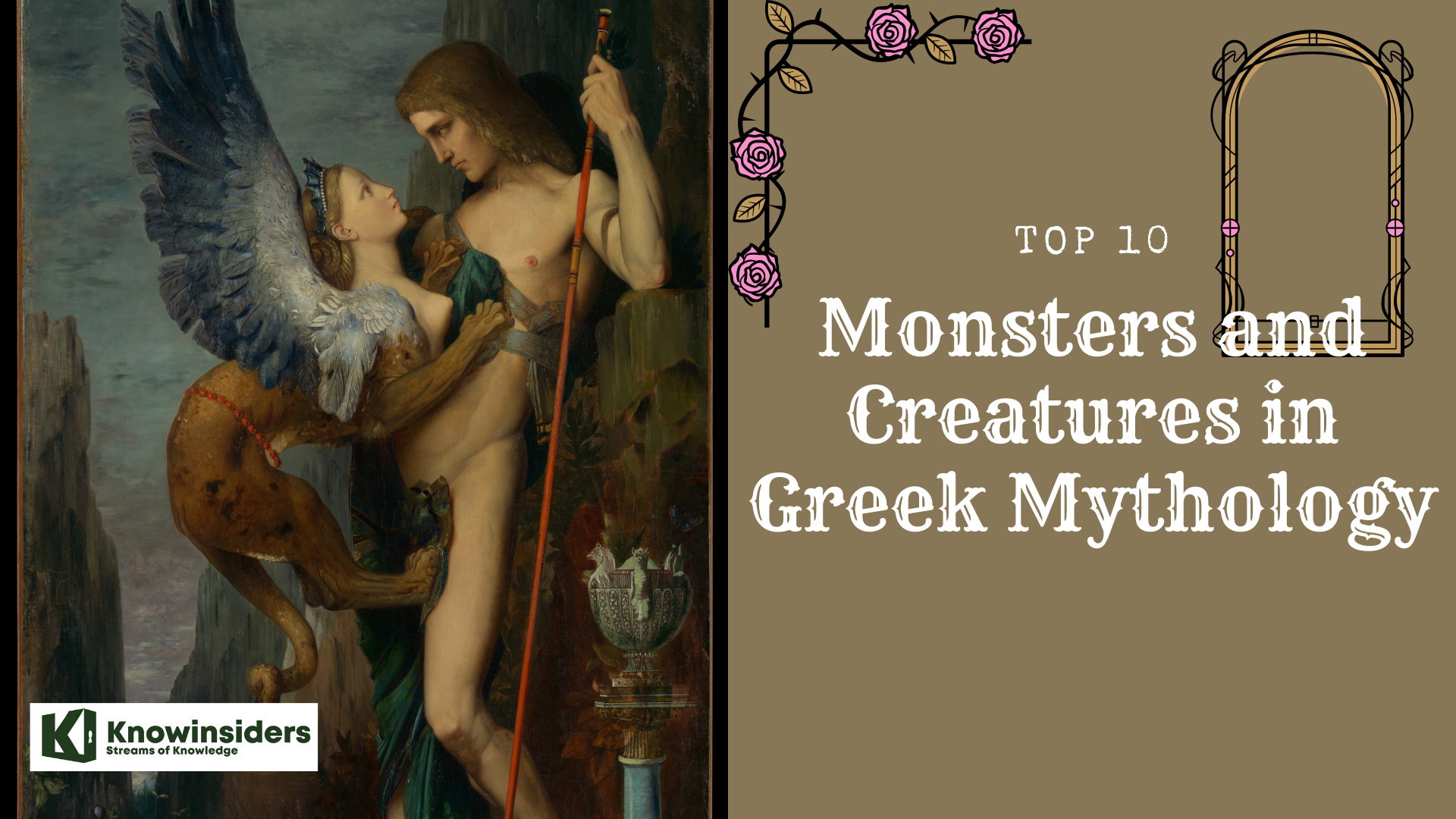 |
| Top 10 monsters and creatures in Greek Mythology |
Belong to the ancient Greeks, concerning their gods and heroes, the nature of the world, and the origins and significance of their own cult and ritual practices, Greek mythology is known for some extremely out of this world mythology. The Greek legends have been the subject of popular culture for thousands of years. The most famous characters in these myths are the gods, goddesses, heroes, heroines, and mythological creatures.
Let’s take a look at top 10 monster and creatures of Greek Mythology.
The list of top 10 monster and creatures of Greek Mythology
10. The Sphinx
9. The Cyclops
8. Typhon
7. Lamia
6. Echidna
5. The Chimera
4. The Hydra
3. Cerberus
2. The Minotaur
1. Medusa
Who are the monster and creatures of Greek Mythology
10. The Sphinx
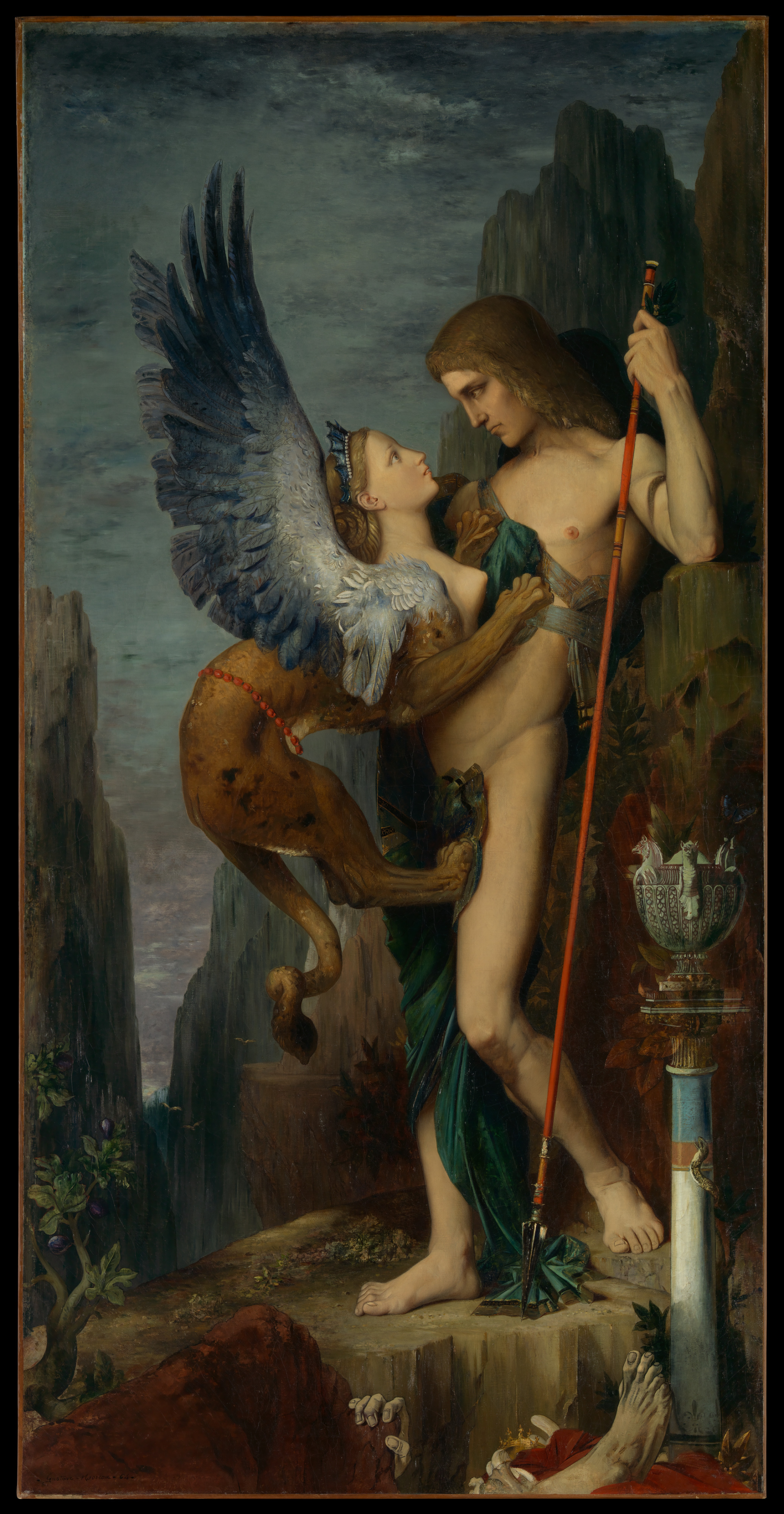 |
| Oedipus and the Sphinx 1864 Gustave Moreau |
THE SPHINX was a female monster with the body of a lion, the head and breast of a woman, eagle's wings and, according to some, a serpent's tail.
She was sent by the gods to plague the town of Thebes as punishment for some ancient crime, preying on its youths and devouring all who failed to solve her riddle. The regent of Thebes, King Kreon (Creon), offered the throne to the one who would destroy her. Oidipous (Oedipus) took up the challenge, and when he solved the Sphinx's riddle, she cast herself off the mountainside in despair.
Sphinxes were very popular in ancient art. They were employed as sculptural gave stelae upon the tombs of men who died in youth. In archaic vase paintings they often appear amongst a procession of animals and fabulous creatures such as lions and bird-bodied sirens.
9. The Cyclops
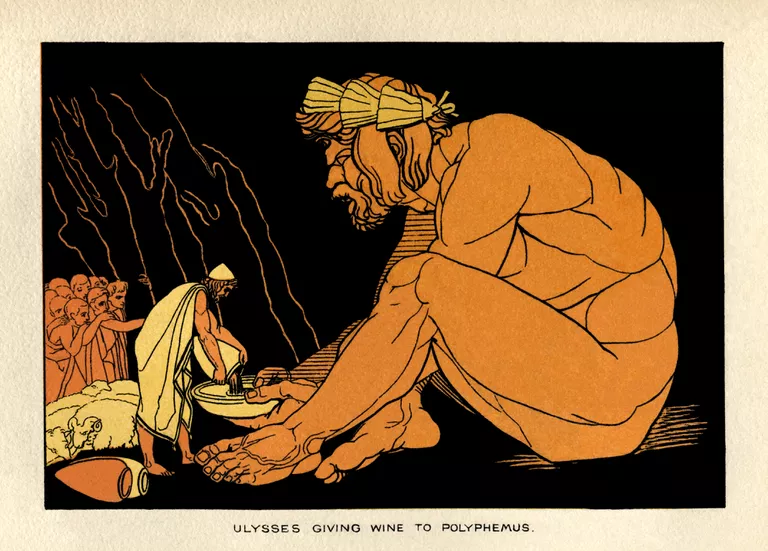 |
| Ulysses giving wine to the Cyclops Polyphemus. From “Stories From Homer” by Alfred J. Church, illustration by John Flaxman. Published by Seeley, Jackson & Halliday, London, 1878. whitemay / Getty Images |
Cyclops, (Greek: “Round Eye”) in Greek legend and literature, any of several one-eyed giants to whom were ascribed a variety of histories and deeds. In Homer the Cyclopes were cannibals, living a rude pastoral life in a distant land (traditionally Sicily), and the Odyssey contains a well-known episode in which Odysseus escapes death by blinding the Cyclops Polyphemus. In Hesiod the Cyclopes were three sons of Uranus and Gaea—Arges, Brontes, and Steropes (Bright, Thunderer, Lightener)—who forged the thunderbolts of Zeus. Later authors made them the workmen of Hephaestus and said that Apollo killed them for making the thunderbolt that slew his son Asclepius.
The walls of several ancient cities (e.g., Tiryns) of Mycenaean architecture were sometimes said to have been built by Cyclopes. Hence in modern archaeology the term cyclopean is applied to walling of which the stones are not squared.
8. Typhon
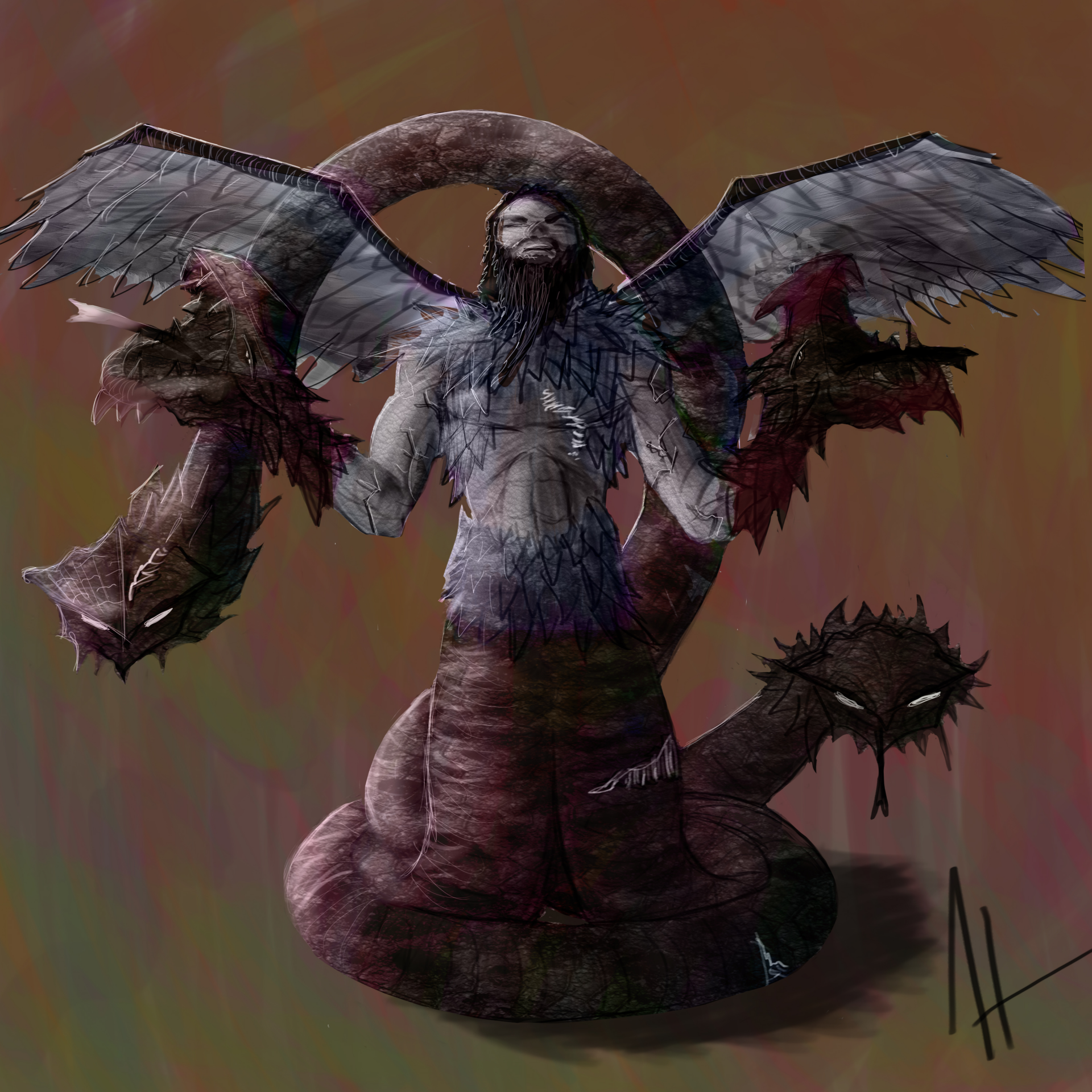 |
| Photo: jacobhoughton via DeviantArt |
Typhon was the most deadly monster of Greek mythology. The last son of Gaia, fathered by Tartarus, he was known as the “Father of All Monsters”; his wife Echidna was likewise the “Mother of All Monsters.” He was described in pseudo-Apollodorus, Bibliotheke, as the largest and most fearsome of all creatures. His human upper half supposedly reached as high as the stars, and his hands reached east and west. Instead of a human head, a hundred dragon heads erupted from his neck and shoulders.
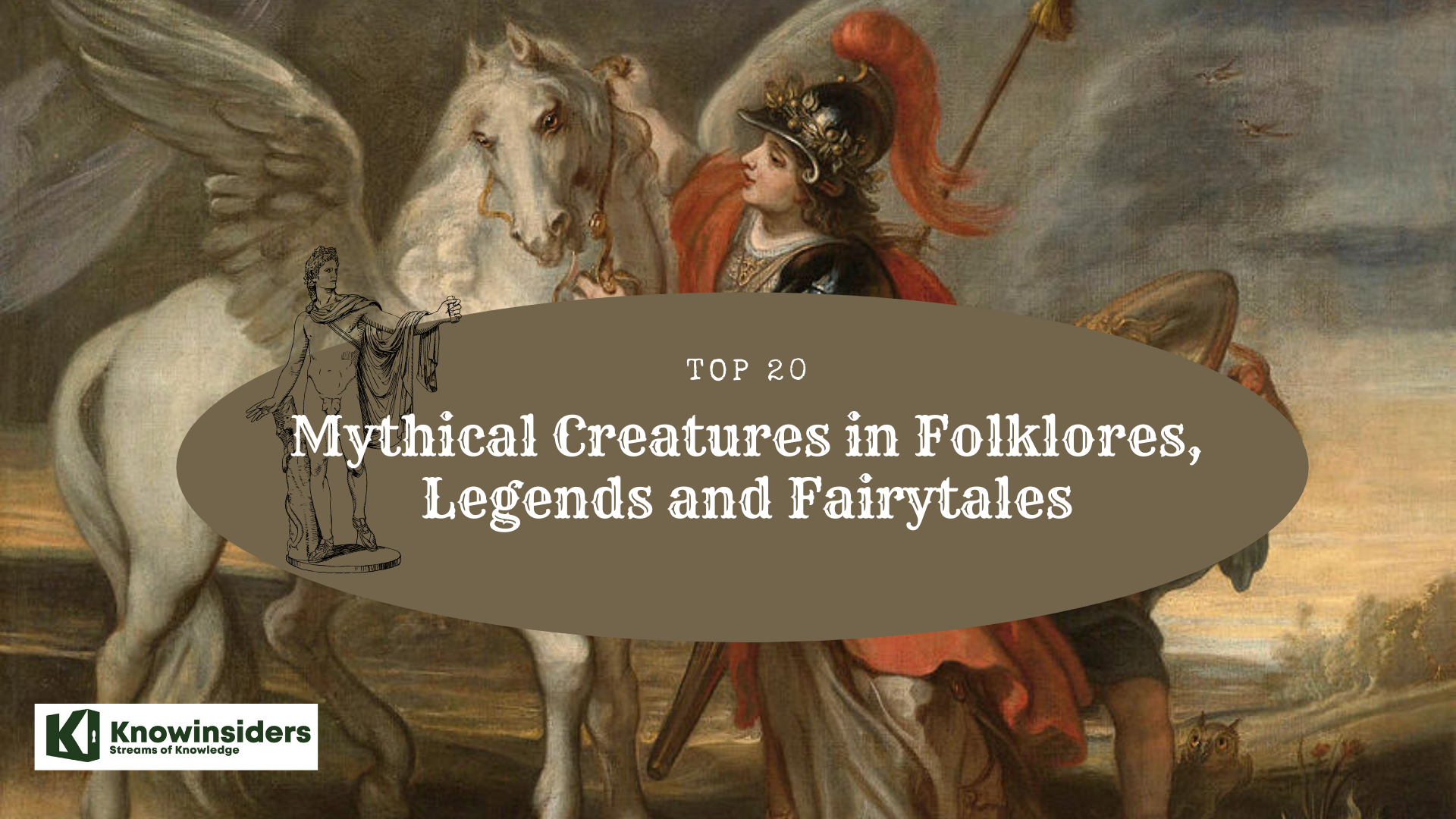 Top 20 Most Mythical Creatures From Legends, Folklore and Fairytales Top 20 Most Mythical Creatures From Legends, Folklore and Fairytales Check out the top 20 mythical creatures in legends, folklores and fairytales in the article below. |
7. Lamia
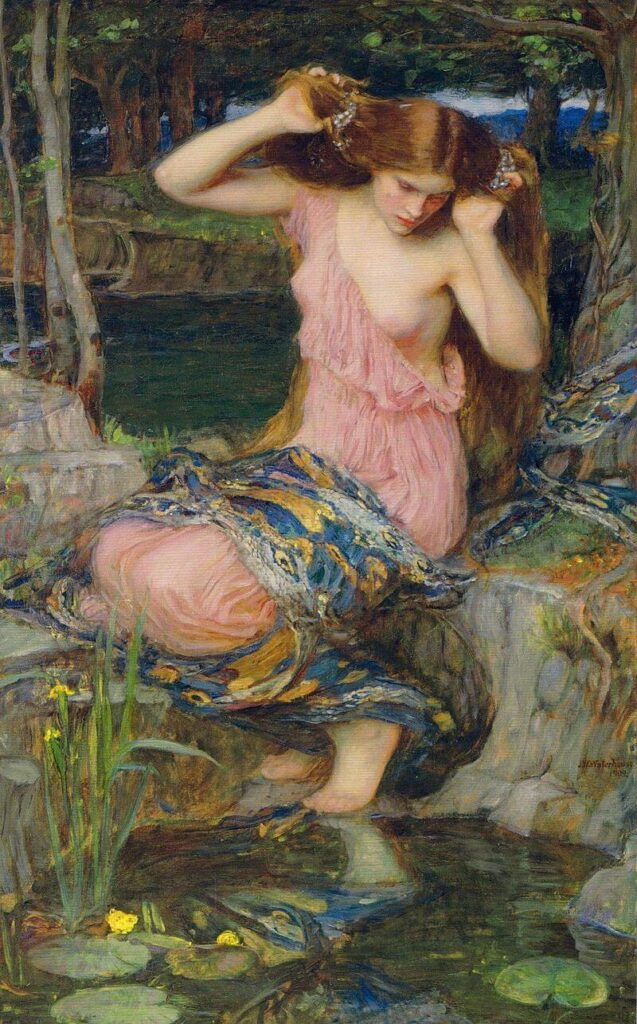 |
| Lamia (Second Version – 1909) by John William Waterhouse. Public Domain. |
Lamia was a beautiful Libyan queen loved by Zeus. Thus, through no fault of her own, she incurred the wrath of Hera upon herself. Angry with Zeus’ interest for her, the goddess showed no mercy towards Lamia: every time the girl gave birth to a child, Hera either murdered it or made Lamia kill it herself.
Either way, after a while, Lamia went mad and began stealing babies from mothers more fortunate than her only so that she could eat them. It is said that the wickedness of Lamia’s revenge was so unprecedented that it visibly disfigured her face. In time, this child-eating monster became a bogey-woman, a word Greek mothers used to frighten their children into discipline and good behavior.
6. Echidna
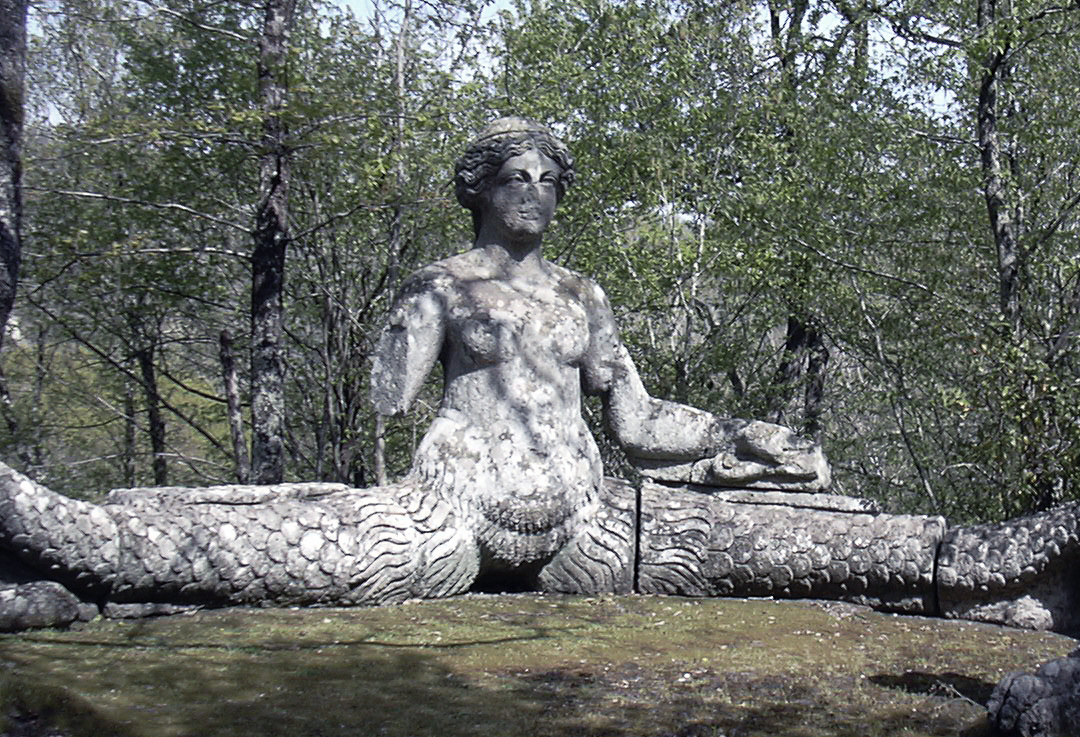 |
| Photo: Wikipedia |
EKHIDNA (Echidna) was a monstrous she-dragon (drakaina) with the head and breast of a woman and the tail of a coiling serpent. She probably represented the corruptions of the earth--rot, slime, fetid waters, illness and disease.
Ekhidna was sometimes equated with Python "the Rotting One", a dragon born of the fetid slime left behind by the great Deluge. Others name her the Tartarean lamprey, and place in her to the dark, swampy pit of Tartaros beneath the earth. Hesiod, makes her a daughter of monstrous sea-gods, and presumably associates her with rotting sea-scum and fetid salt-marshes.
Ekhidna was the consort of Typhoeus--a monstrous, multi-headed storm-giant who challenged Zeus to the throne of heaven. Together they spawned a host of terrible monsters to plague the earth including the Khimaira (Chimera), Kerberos (Cerberus), the Hydra, Sphinx and the Drakon Hesperios (Hesperian Dragon).
5. The Chimera
 |
| Photo: Jacopo Ligozzi |
Chimera, in Greek mythology, a fire-breathing female monster resembling a lion in the forepart, a goat in the middle, and a dragon behind. She devastated Caria and Lycia until she was slain by Bellerophon. In art the Chimera is usually represented as a lion with a goat’s head in the middle of its back and with a tail that ends in a snake’s head. This matches the description found in Hesiod’s Theogony (7th century BC). The word is now used generally to denote a fantastic idea or figment of the imagination.
Chimera, or chimère, in architecture, is a term loosely used for any grotesque, fantastic, or imaginary beast used in decoration.
4. The Hydra
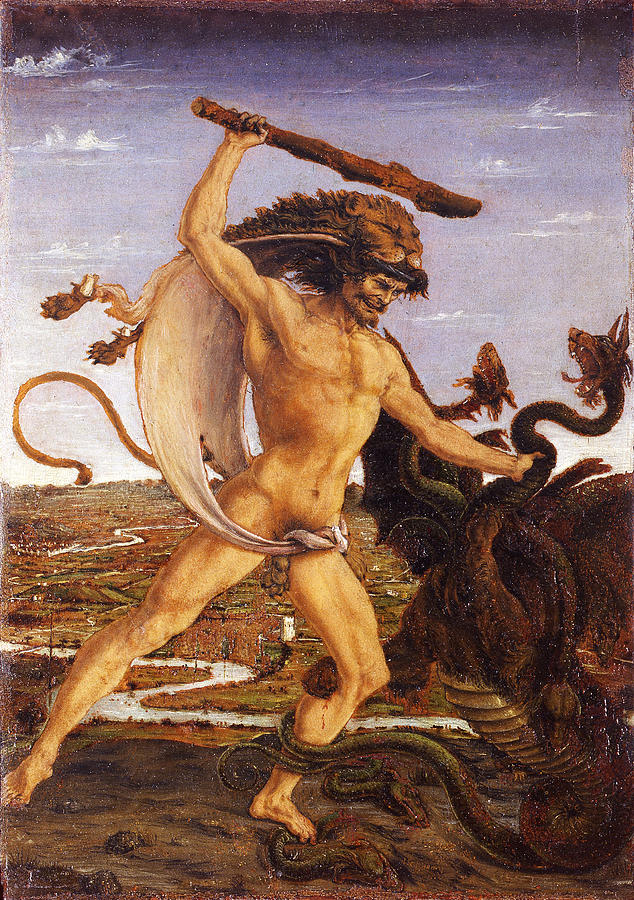 |
| Hercules and the Hydra is a painting by Antonio del Pollaiuolo |
Number six on our list is the deadly Hydra, a serpent like water monster with reptilian traits. A creature who’s venom was so dangerous, that even the breath exhaled by the Hydra could be lethal to any man. Additionally, the Hydra had the confounding ability to regrow any decapitated limbs with alarming speed. It was said that for every head that was severed, two more would grow in it’s place. Its lair was the lake of Lerna in an ancient part of the Peloponnese . The Hydra would hide in an underwater cave that was said to have been an entrance to the underworld.
The Hydra is known for being the second monster that Heracles encounters during his twelve labors. Before attacking the Hydra, Heracles covers his mouth and nose with cloth so that he willHydra remain safe from the deadly toxins the monster emits from it’s many mouths. Heracles originally attacks the Hydra with either a sickle, a sword, or his trademark club. However the hero quickly realizes that for every head decapitated, the creature quickly grows two more. The battle would appear hopeless.
Heracles then devises a plan to turn the tide against the monster. As soon as the hero decapitates one of the Hydra’s heads, he immediately takes a torch to the stump of a neck. The wound is cauterized and the creature is unable to produce anymore menacing heads. Heracles eventually lobs off the final head of the Hydra, effectively killing the creature and completing his second task.
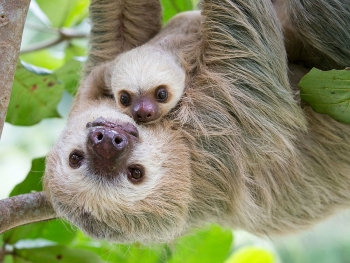 Sloth - One of World's Strangest Animals Sloth - One of World's Strangest Animals Sloths—the sluggish tree-dwellers of Central and South America—spend their lives in the tropical rain forests. Follow the article to know more about one of the ... |
3. Cerberus
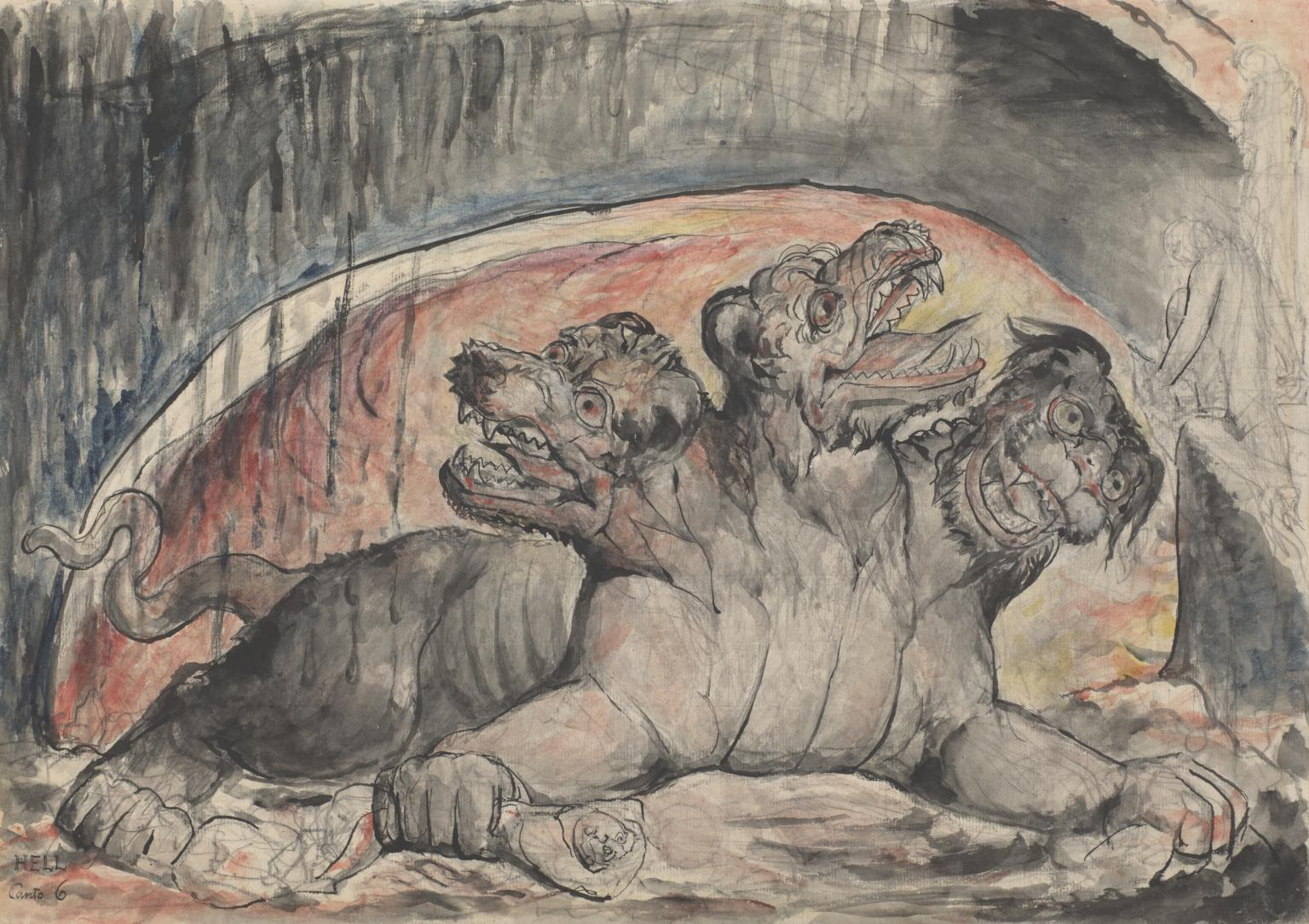 |
| Photo: William Blake "Cerberus" 1824–7 |
Cerberus – also known as the “hound of Hades” – was the multi-headed dog who guarded the gates of the Underworld, preventing the dead from leaving, and making sure that those who entered never left. A child of Typhon and Echidna, he was part of a monstrous family, which included Orthus, the Lernaean Hydra, and the Chimaera as well. Only on three occasions Cerberus was tricked by visitors of Hades: Heracles did it with his strength, Orpheus with his music, and the Sybil of Cumae with a honey-cake.
According to Hesiod, Cerberus was the second of the four monstrous children of Typhon and Echidna, being born after Orthus, the two-headed hound who guarded the cattle of Geryon, but before the Lernaean Hydra and, quite possibly, the Chimaera – all of them multi-headed. Later authors list many other monsters among the siblings of Cerberus, including the Sphinx, the Nemean Lion, the Caucasian Eagle, the Crommyonian Sow, the Colchian Dragon, Ladon, and even Scylla and the mother of the Gorgons. Quite a family, indeed!
2. The Minotaur
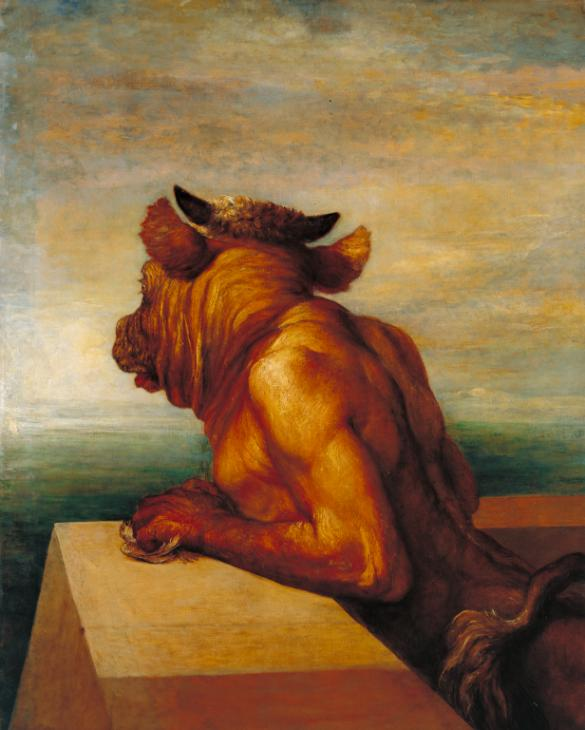 |
| Photo: George Frederic Watts, 'The Minotaur' 1885 |
A grotesque abomination that possessed the body of a man and the head of a bull, the Minotaur is best remembered for his affinity for devouring flesh and his cryptic home, deep within the confines of the twisted labyrinth. The labyrinth was an impossible maze constructed by the inventor Daedalus. It was said to have been located under the palace of Knossos, the home of King Minos of Crete.
The story goes that King Minos, the ruler of Crete, lost his son Androgeus, when the boy was murdered in Athens. Accounts vary, but one version tells that the prince was murdered because the Athenians were jealous of his many victories at the recent Panathenaic Games in Athens. King Minos would subsequently wage war on the Athenians, eventually finding victory. As penance for the murder of Androgeus, every year the Athenians were forced to send seven young men and seven maidens to the island of Crete, where they would be released into the labyrinth and systematically hunted and devoured by the Minotaur.
It is at this time that Theseus, the hero of Athens, volunteers to be sent to Crete as a sacrifice to the monster. Upon arriving Theseus is aided by Ariadne, the daughter of King Minos. Before the Athenians can be trapped within the labyrinth, Ariadne releases Theseus from his holding cell and brings him to the entrance of the great maze. Theseus navigates the labyrinth and discovers the Minotaur sleeping in the center of the vast dungeon.
Using the element of surprise, Theseus attacks the Minotaur and dispenses the monster with ease. The hero and the other Athenians, along with princess Ariadne, escape Minos’ palace and make a hasty retreat to Athens under the cover of night.
1. Medusa
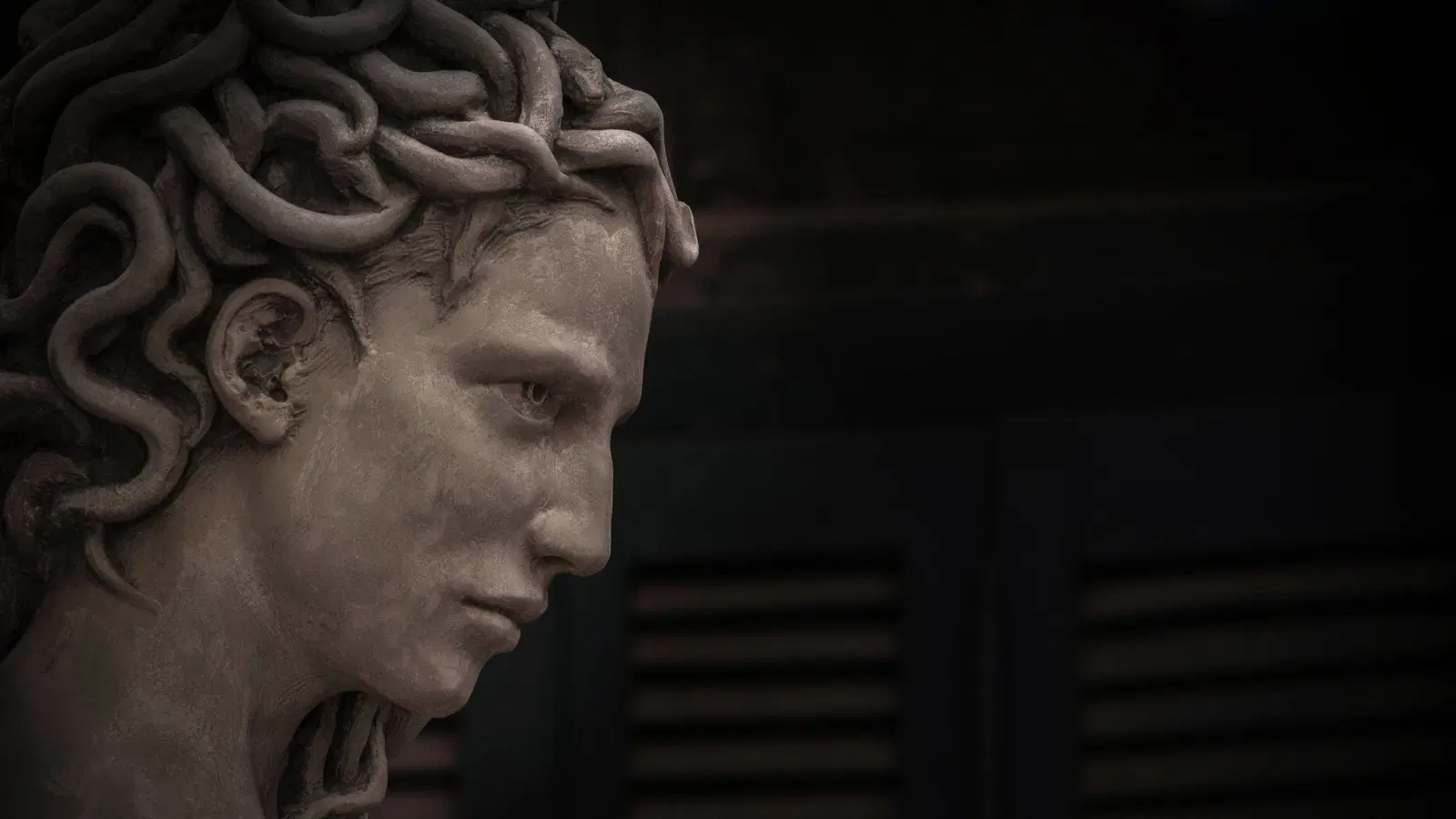 |
| Photo: Quartz |
A monstrous creature with the ability to turn to stone any person who gazed upon her face, Medusa remains a popular monster of ancient mythology. Interpretations of Medusa differ. Somemedusa accounts describe how Medusa was born to the archaic marine deity, Ceto. In this version of the tale, Medusa is born with a hideous face and a serpents tail where her legs should be. In Ovid’s Metamorphoses, Medusa was told to have once been a beautiful maiden who was transformed into a hideous monster after being raped in the temple of Athena by the sea god Poseidon. The one aspect of Medusa that remains consistent through various legends his her hair, which was said to have been composed of writhing, venomous snakes.
Medusa is confronted by the hero Perseus, who was bade by his stepfather to retrieve the head of the monster. Using a mirrored shield that was given to him by Athena, Perseus viewed Medusa’s reflection so as not to look directly at the monster. Perseus slays Medusa and chops off her head. From the neck of the dying Gorgon, sprang the winged horse Pegasus. Perseus would use the head of Medusa as a weapon against enemies; until he eventually presented it to Athena who attached it to the front of her shield.
| Greek mythology, body of stories concerning the gods, heroes, and rituals of the ancient Greeks. That the myths contained a considerable element of fiction was recognized by the more critical Greeks, such as the philosopher Plato in the 5th–4th century BCE. In general, however, in the popular piety of the Greeks, the myths were viewed as true accounts. Greek mythology has subsequently had extensive influence on the arts and literature of Western civilization, which fell heir to much of Greek culture. Although people of all countries, eras, and stages of civilization have developed myths that explain the existence and workings of natural phenomena, recount the deeds of gods or heroes, or seek to justify social or political institutions, the myths of the Greeks have remained unrivaled in the Western world as sources of imaginative and appealing ideas. Poets and artists from ancient times to the present have derived inspiration from Greek mythology and have discovered contemporary significance and relevance in Classical mythological themes. |
 Top 10 Unusual Families In The World Top 10 Unusual Families In The World Some families were born with unique features and characteristics. Let’s find out why those 10 families are the most unusual. |
 Top 10 Most Bizarre Beauty Treatments in the world Top 10 Most Bizarre Beauty Treatments in the world Pampering yourself is no longer just about a trip to the spa, you will be shocked to discover the top most bizarre beauty treatments that ... |
 Top 10 Weirdest Awards In The World Top 10 Weirdest Awards In The World Receiving awards is an honour but there are some weird awards that you don’t want to receive at all. ... |
 Phobias - Top 10 Most Common Fears People Hold Phobias - Top 10 Most Common Fears People Hold Phobias are distressing emotions initiated by out-of-proportion fears, both real and imaginary. Check out Top 10 Most Common Fears People Hold – Phobias right below! |























